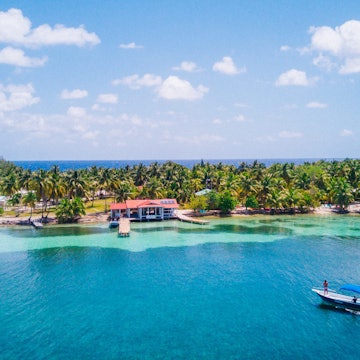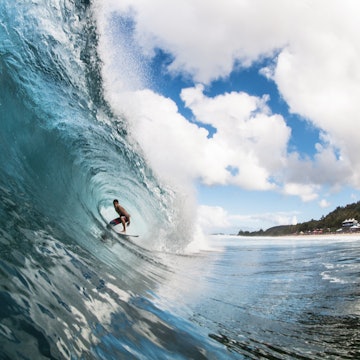

St. Lucia is just one of the Caribbean's stunning islands. Nancy Pauwels/Shutterstock
If you've ever had the urge to disappear to a Caribbean island, open a sandy beach bar and leave the chaos of "real life" behind, rest assured, you're not alone. It's a tantalizing fantasy — and for good reason. The Caribbean hits differently with its endless turquoise water, swaying palms and rum punches that deliver quite the left hook. Over the last decade, I've spent a good chunk of time zigzagging through this part of the world, writing stories, dodging the occasional downpour and experiencing the genuinely distinct personalities of each island. Think wild hikes, beach bar crawls, centuries of history and glassy pools of blue.
Here are the eight most beautiful Caribbean islands.
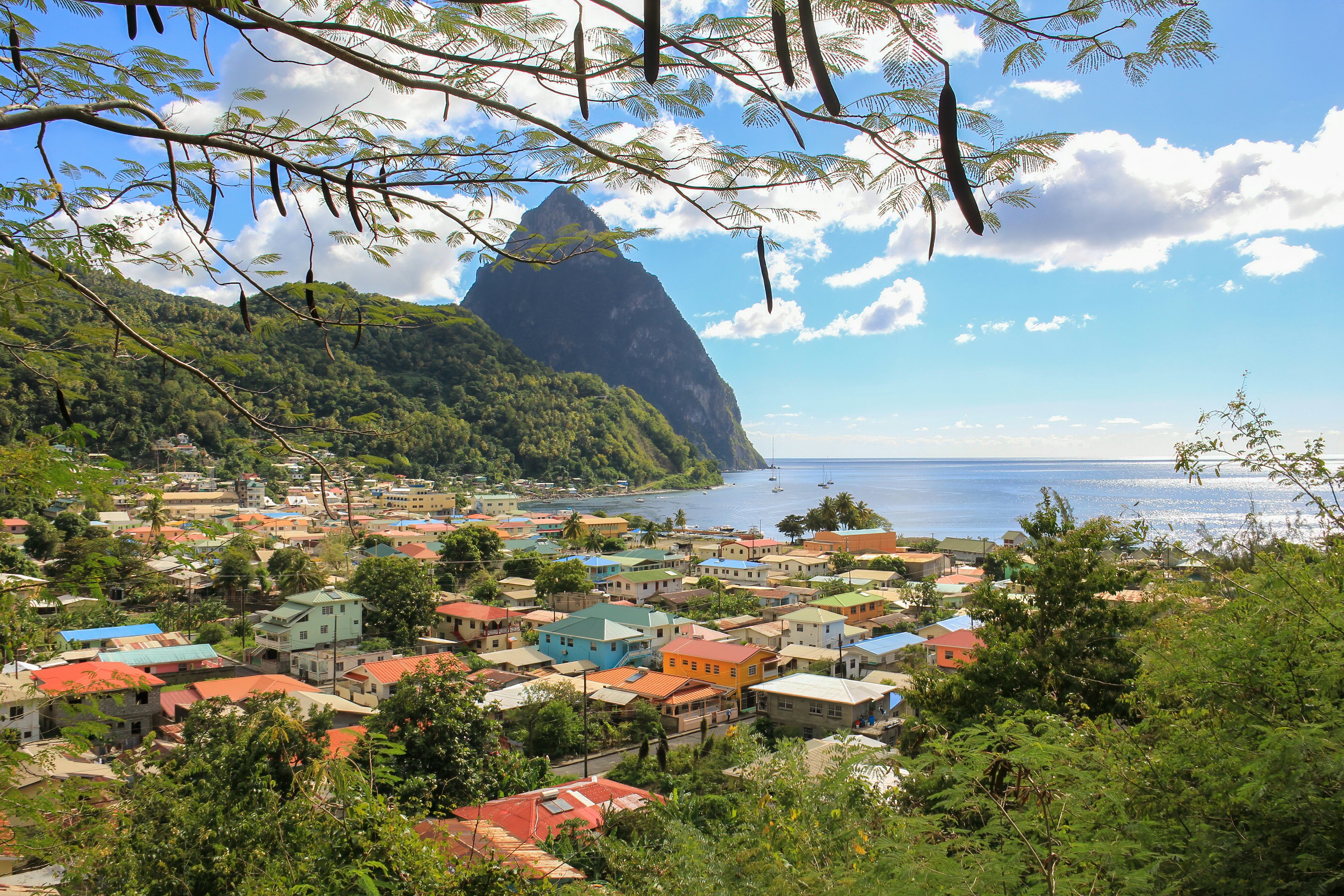
1. St. Lucia
Best for couples and dramatic scenery
I know it's not right to play favorites, but I must admit that St. Lucia is mine. I write this, believe it or not, from one of my pilgrimages to this jungle-covered, volcanic island.
If you’ve ever dreamed of Hawaii but balked at the jet lag or the price tag, St. Lucia might be your perfect match. This lush, volcanic island delivers similar drama with its jungle-covered peaks, misty valleys and black-sand beaches, all without requiring a trans-Pacific flight. The rainforest hums with tree frogs, mango trees hang heavy over winding roads, and sulfur springs bubble from deep underground.
The iconic Pitons — two towering volcanic spires near the island’s southern coast — frame the skyline and are the backdrop for some of the most scenic resorts in the Caribbean. But beyond the resort walls, St. Lucia is full of life. Fishing villages like Canaries, Laborie and Anse La Raye cling to the coastline with colorful wooden homes and beachside BBQs.
The volcanic history of the island is best experienced at Sulphur Springs Park near Soufrière, where you can slather yourself in mineral-rich mud before rinsing off in a warm, steamy pool. For a more active day, take the short but satisfying hike up the Tet Paul Nature Trail for a panoramic view over the island’s southern tip and a postcard-perfect look at the Pitons.
Getting there: Fly into Hewanorra International Airport (UVF), located on the southern end of the island near many of the island’s most scenic hotels and natural attractions.
Planning tip: The island’s spiny mountains make for breathtaking scenery, but also hair-raising road trips. The highway is a narrow, zigzagging ribbon that coils around cliffs and drops, so plan for slow going, especially if you’re prone to motion sickness. December to April is the best time to visit for dry skies and clear views.
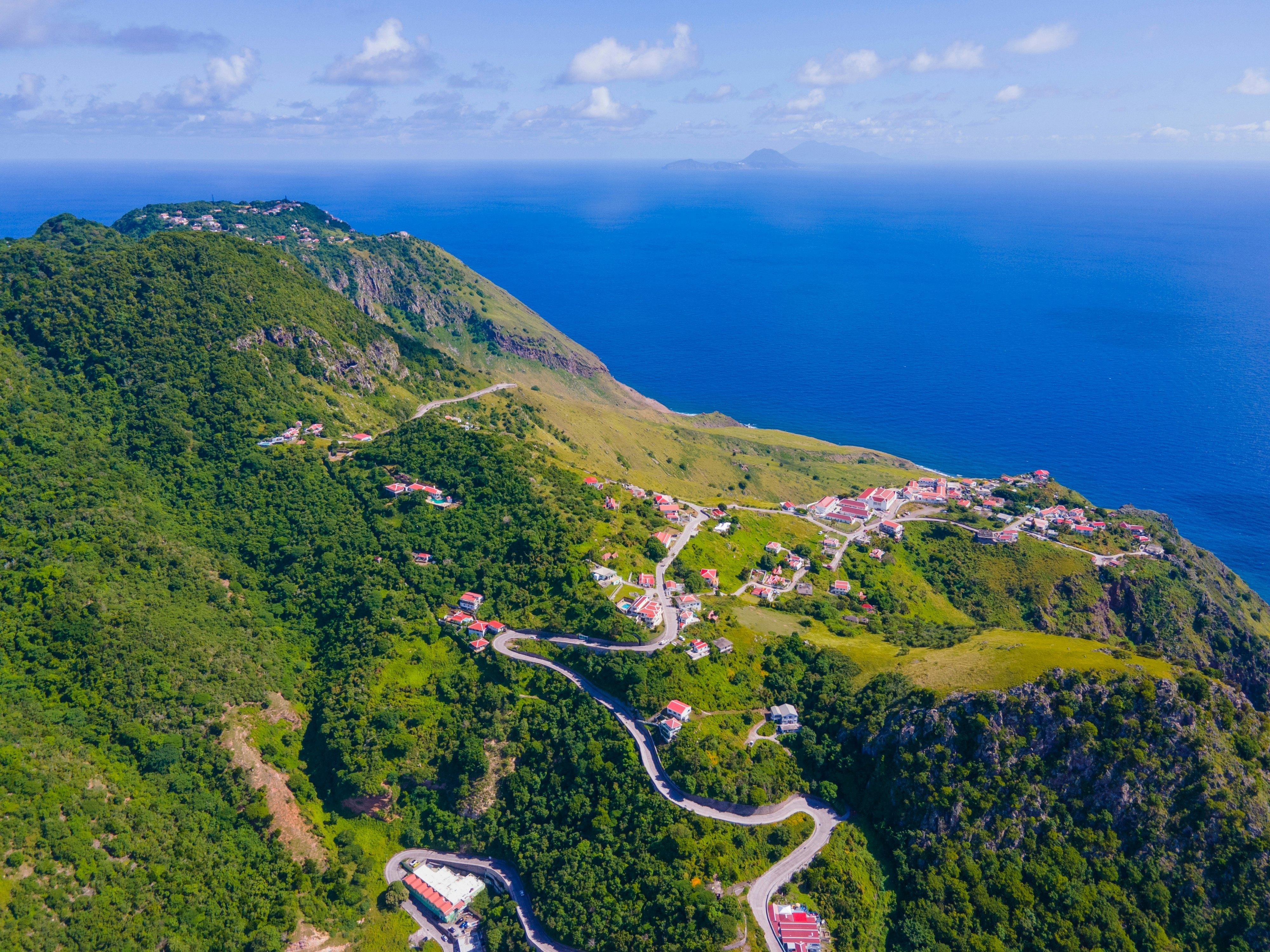
2. Saba
Best for divers and hikers
Saba is not your typical Caribbean island, and that's what makes it so special. Rising steeply out of the sea like a storybook volcano, this 5-sq-mi Dutch Caribbean outpost skips the beaches and big resorts entirely. Instead, you'll find cloud forests, coral reefs and a quirky personality. With just four hotels (a fifth is slated to open later this year), Saba is one of the most low-key, low-crowd destinations in the region.
It's also famously home to the smallest commercial runway in the world. Landing at Juancho E. Yrausquin Airport is a heart-racing thrill as the plane touches down on what looks more like a postage stamp than a runway, flanked by sea cliffs on either end. But once your feet are on the ground, the pace slows way down. This is a place where you wave to everyone, leave your hotel key in your door and catch the island-wide rotating happy hour. I love the party at Tropics Cafe, where locals and travelers gather for cocktails, live music, sunset views and yummy bar snacks.
If you're not diving in Saba's protected marine park, a haven for colorful reefs and drop-offs, then you're probably hiking. The island has more than 20 hiking trails that range from mellow to leg-buckling. The Mas Cohones Trail offers spectacular sea views and a moderate climb, while the Sandy Cruz Trail and the 1,064-step trek up Mt. Scenery leads through mist-draped rainforest to cloud-piercing views.
As for beaches, there really aren't any. But when the tide is low, Wells Bay reveals a hidden sliver of black sand at the base of the cliff.
Getting there: Fly into St. Maarten (SXM), then take a tiny Winair plane or hop on the ferry for a scenic 90-minute ride across open water.
Planning tip: Juliana’s Hotel in Windwardside is cozy and welcoming, with a pool, ocean views and a laid-back social vibe.
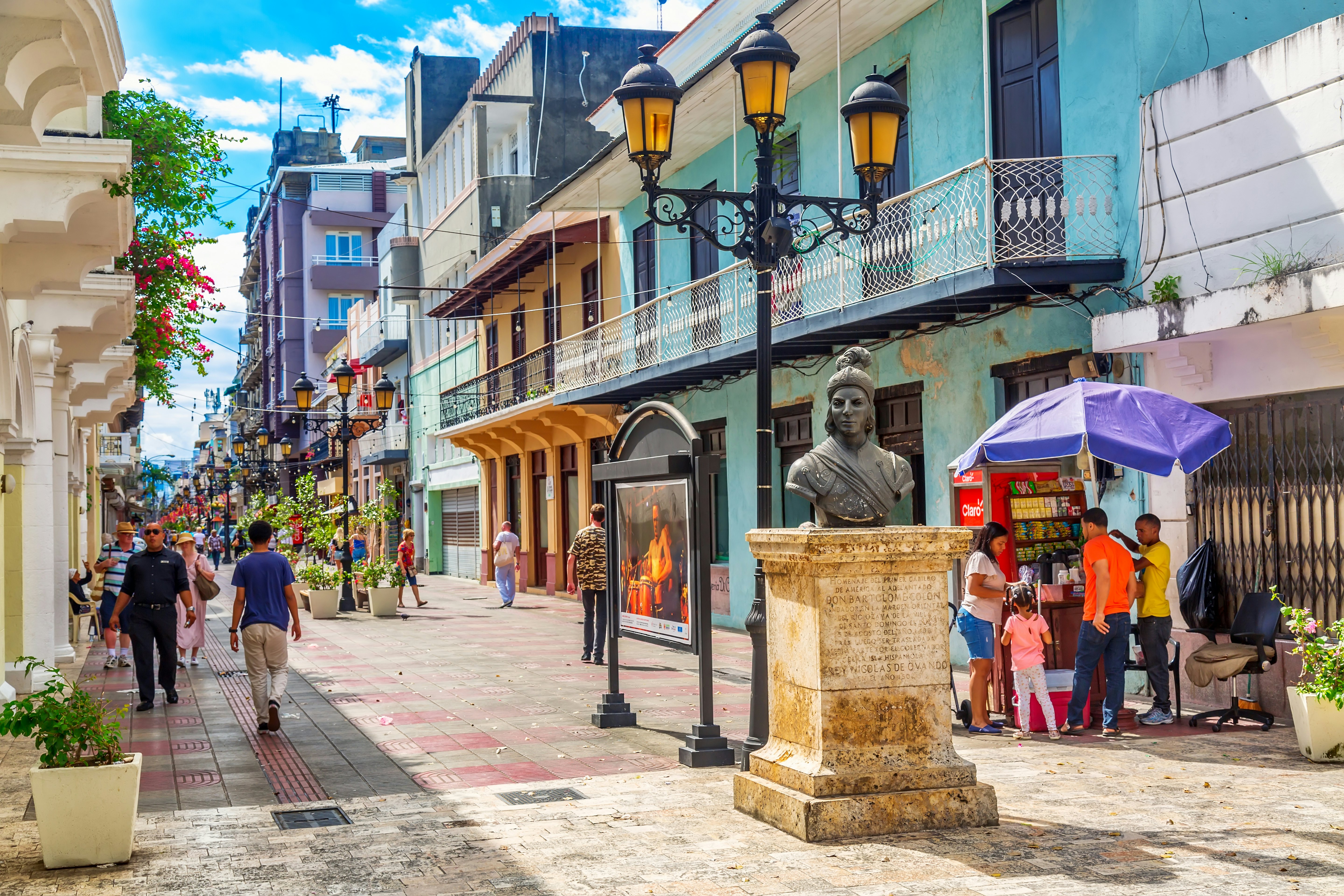
3. Dominican Republic
Best for culture and variety
The Dominican Republic is often reduced to a single mental image: white-sand beaches lined with all-inclusive resorts in Punta Cana. And while the hotels there are as varied and impressive as any in the Caribbean, the true beauty of the DR lies far beyond the lounge chair.
Santo Domingo, one of the oldest European cities in the Americas, is a colorful mix of history and modern-day energy. In the Zona Colonial, cobblestone streets lead to centuries-old churches, sun-drenched courtyards and cozy cafes. Crab a coffee at Affogato or sip a cold Presidente at La Cacibajagua. The capital's museums, like the Museo de las Casas Reales, offer a deep dive into the layered history.
Head north to discover Miches, a rising eco-tourism hotspot with wild beaches and tropical forest. Then there's the southwest, a region many travelers miss entirely. Jaragua National Park, part of a UNESCO biosphere reserve, is home to flamingo-filled lagoons, dry forests and limestone formations. Bahía de las Águilas, reachable by boat from La Cueva, might just be the most stunning beach in the entire Caribbean. Think five miles of powdery white sand with no buildings in sight.
Getting there: The Dominican Republic has several international airports: Punta Cana (PUJ), Santo Domingo (SDQ), Puerto Plata (POP) and La Romana (LRM) are the most commonly used, depending on your region of interest.
Planning tip: Rent a car if you're venturing outside the resort zones, but drive with caution — traffic can be chaotic. November through April brings the best weather and whale-watching season in Samaná.

4. Virgin Gorda, British Virgin Islands
Best for beach explorers and sailors
Virgin Gorda's key attraction is The Baths, a surreal landscape of giant granite boulders scattered across a white-sand beach, forming caves, pools and secret passageways. You'll want to go early in the morning or later in the afternoon to avoid the day-tripping crowds and have the tide pools mostly to yourself. Bring water shoes and a waterproof bag as climbing through the rock crevices means getting wet.
But The Baths are just the beginning. Spring Bay, right next door, offers gentler swimming and excellent snorkeling without the crowds. Savannah Bay is wide and often empty, with shallow water and long stretches of unspoiled sand. Devil's Bay, at the end of The Baths trail, is worth lingering at for a post-adventure float.
Virgin Gorda is also a prime jumping-off point for sailing, thanks to its location within the British Virgin Islands archipelago, which includes over 50 smaller islands and caves. It's a sailor's paradise: calm waters, short distances and endless coves to drop anchor in. From Virgin Gorda, you can reach Tortola by ferry in under an hour or head to pancake-flat Anegada by boat in 1.5 to 2 hours. Anegada's pink conch shell beaches and grilled lobster dinners make it well worth the journey.
Getting there: Fly into Tortola’s Terrance B. Lettsome Airport (EIS), then take a 30-minute ferry or a quick flight to Virgin Gorda. You can also reach the island by ferry from St. Thomas in the USVI, though the trip is longer.
Planning tip: The BVIs are most popular from December through April, especially with sailing regattas and holiday travelers. Book ferry tickets in advance during high season, and pack snorkel gear — most beaches here are steps away from coral gardens (water shoes also recommended).

5. Dominica
Best for hiking, hot springs and wilderness
Known as "The Nature Island," this mountainous, jade-colored jewel is a haven for travelers who'd rather lace up their hiking boots than stake out a sun lounger. With nine active volcanoes, 365 rivers, steaming fumaroles and dense rainforests teeming with parrots and orchids, Dominica is beyond wild.
Start with Morne Trois Pitons National Park, a UNESCO World Heritage site and the epicenter of the island's volcanic landscape. Here you'll find the famous Boiling Lake, reached via a demanding seven-hour hike that traverses hot springs, cloud forest and the eerie "Valley of Desolation," where the earth gurgles and steams underfoot. For something gentler, the Emerald Pool Trail leads through mossy rainforest to a waterfall-fed swimming hole.
Waterfalls are part of daily life in Dominica. Trafalgar Falls, a pair of cascades near the village of Laudat, are accessible via a short walk and offer natural hot pools at the base where you can soak among smooth boulders. Spanny Falls is another lesser-known option, with two falls and few crowds, reached by a 15-minute trail from the roadside.
The culture of Dominica is just as rich as the landscape. Dominica has the Caribbean's largest remaining population of Kalinago people. You can visit Kalinago Barana Aute, a model village on the east coast, to learn about their traditions, crafts and farming techniques.
In the capital of Rousseau, colorful buildings line the waterfront, and the Roseau Market hums with vendors selling tropical fruit, spices and bush medicine. For a taste of the island, grab a Kubuli beer and a plate of grilled fish at Pearl's Cuisine along the east coast.
Getting there: Fly into Douglas–Charles Airport (DOM) from regional hubs like San Juan, Barbados or St. Maarten. Ferries connect to Guadeloupe, Martinique and St. Lucia for island-hopping.
Planning tip: December to May is the dry season, best for hiking and diving. Because tourism is still emerging here, many attractions close early — plan accordingly and book guides in advance if you're tackling more remote trails.

6. Providenciales, Turks & Caicos
Best for beach purists
When you close your eyes and imagine the most perfect beach in the world, chances are you're imagining Grace Bay Beach in Providenciales, Turks & Caicos. This stretch of shoreline on the island's northern coast is the main event: powdery white sand, glass-clear water with barely a ripple, and just enough palm trees for that aesthetically perfect pop of green.
But there's more to Providenciales (Provo to locals) than beach beauty. While Grace Bay is lined with upscale resorts and polished beachfront restaurants, venture just a little further out and you'll find secluded coves, pastel-colored coral reefs and slices of local life.
For snorkeling, head to Smith's Reef or Bight Reef, both just offshore and easily accessible by beach. Expect to see rays, turtles and technicolor schools of fish. If you want to dive deeper, Provo is the gateway to one of the largest barrier reefs in the world, the Turks and Caicos Barrier Reef, with dramatic wall dives and visibility that often exceeds 100 feet.
When it's time to refuel, locals head to Da Conch Shack, a colorful beachfront eater in Blue Hills that lives up to the hype. The cracked conch is crispy and tender, the drinks are strong, and the setting (barefoot tables in the sand) is unbeatable. For a more refined evening, Coco Bistro services Caribbean fine dining under a canopy of palms. Be sure to book ahead.
Taylor Bay and Sapodilla Bay are two hidden spots on the south shore. These smaller, shallower beaches are ideal for kids or anyone who wants to wade out endlessly into calm, bathtub-warm water.
Provo is also a perfect base for exploring other islands in the archipelago. Day trips to Half Moon Bay, Little Water Cay or Parrot Cay are easy to arrange. Kayaking the mangroves is a great way to spot baby sharks and stingrays in the shallows, while a glow worm tour is an ethereal after-dark adventure for paddling in the bioluminescent bay.
Getting there: Fly into Providenciales International Airport (PLS), which has direct flights from the U.S., Canada and the UK. It’s just a 15-minute drive to most resorts in Grace Bay.
Planning tip: December through April is peak season with perfect weather and higher prices. For a quieter experience, consider late April to early June. While U.S. dollars are the official currency, bring a credit card. Nearly all restaurants and shops accept them. Be sure to make restaurant reservations ahead of time during high season.

7. Grenada
Best for foodies and culture seekers
Known affectionately as "The Spice Island," Grenada packs a punch for the senses. The air smells of nutmeg and cinnamon, the hills are thick with rainforest, and the beaches, both wild and serene, feel untouched by mass tourism. With its mix of Afro-Caribbean traditions, British colonial roots, and a fiercely proud local culture, Grenada has got a ton of soul.
Grand Anse Beach is the heart of the island. This two-mile crescent of golden sand is backed by almond trees and beach bars, with calm water perfect for swimming or floating the afternoon away. From here, you can stroll to Umbrellas Beach Bar for a cold Carib and a grilled fish sandwich or splurge on fresh lobster risotto at the chic Flying Fish at Mount Cinnamon, which overlooks the entire bay from the hillside.
For something a little wilder, head to Morne Rouge Beach (BBC Beach), a more secluded stretch just over the hill from Grand Anse. Or head north to Levara Beach, where leatherback turtles nest from April to June. There's also Bathway Beach in the remote northeast, popular with locals for its rugged coastline and protected swimming area.
Start your cultural deep dive in St. George's, the colorful and historic capital, where pastel buildings rise from the Carenage (waterfront promenade). Climb to Fort George for panoramic views, or browse the stalls at the market where vendors sell everything from passion fruit to homemade hot sauce.
For a taste of the island's spice heritage, tour the Gouyave Nutmeg Processing Station, where nutmeg pods are dried and sorted the old-fashioned way. The River Antoine Rum Distillery, powered by a centuries-old water wheel, offers tours (and tastings) of potent, traditional rums.
Don't leave without diving or snorkeling at the Underwater Sculpture Park in Molinière Bay, a hauntingly beautiful installation by artist Jason deCaires Taylor. The island also has reef and wreck diving, especially off the southern coast.
Getting there: Fly into Maurice Bishop International Airport (GND), which has direct flights from the U.S., UK, and Canada. Most major hotels offer airport transfers, and taxis are readily available.
Planning tip: Visit in August for Spicemas, Grenada’s colorful and high-energy carnival celebration that combines music, dancing and cultural parades. If you prefer a quieter trip, December to April offers dry weather and perfect beach days. Driving is on the left, and although the roads are well-paved near the south, they get steep and winding in the interior, so go slow and enjoy the views.









